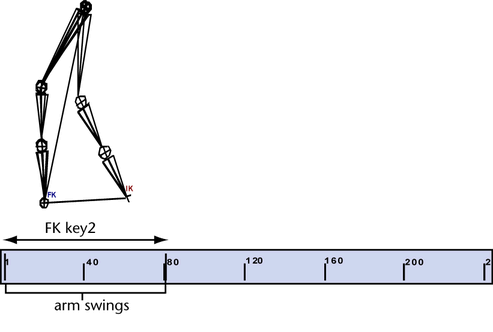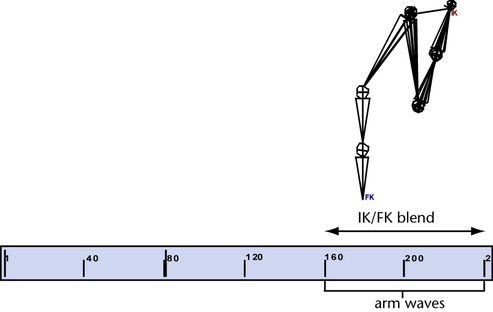This example describes blending the FK animation of a swinging arm with the IK animation of a waving arm.
- Create a simple animation of a swinging arm during a walk cycle:
- Select the root of an arm joint chain (the shoulder joint).
- Rotate it along the Z-axis.
- Set keys for the joint
This produces a rudimentary FK animation.

- Blend this FK animation sequence with the directed motion of the arm waving:
- Set keys on the IK handle and the shoulder joint at the beginning and end of the FK animation to create a blend region.
You can think of these as bounding keys, because they ensure that any keys you set in the blend range between them will not change the animation outside of that range.
- Change the Ik Blend value to 1.000 (pure IK).
- Set keys on the shoulder joint and IK handle.

In the area between the pure FK and IK animation—the blend region, the IK Solver interpolates the animation from 0.000 to 1.000.

The animation is pure IK once the Ik Blend value is 1.000.
- Set keys on the IK handle and the shoulder joint at the beginning and end of the FK animation to create a blend region.
- Translate and rotate the IK handle while setting keys to produce the animation of the arm waving.
- Set the animation back (using another blend region and changing the
Ik Blend value to 0.000) to pure FK.
The resulting animation resembles a swinging arm (FK) that rises into a wave (IK) and then descends back into a swinging motion (return to FK).